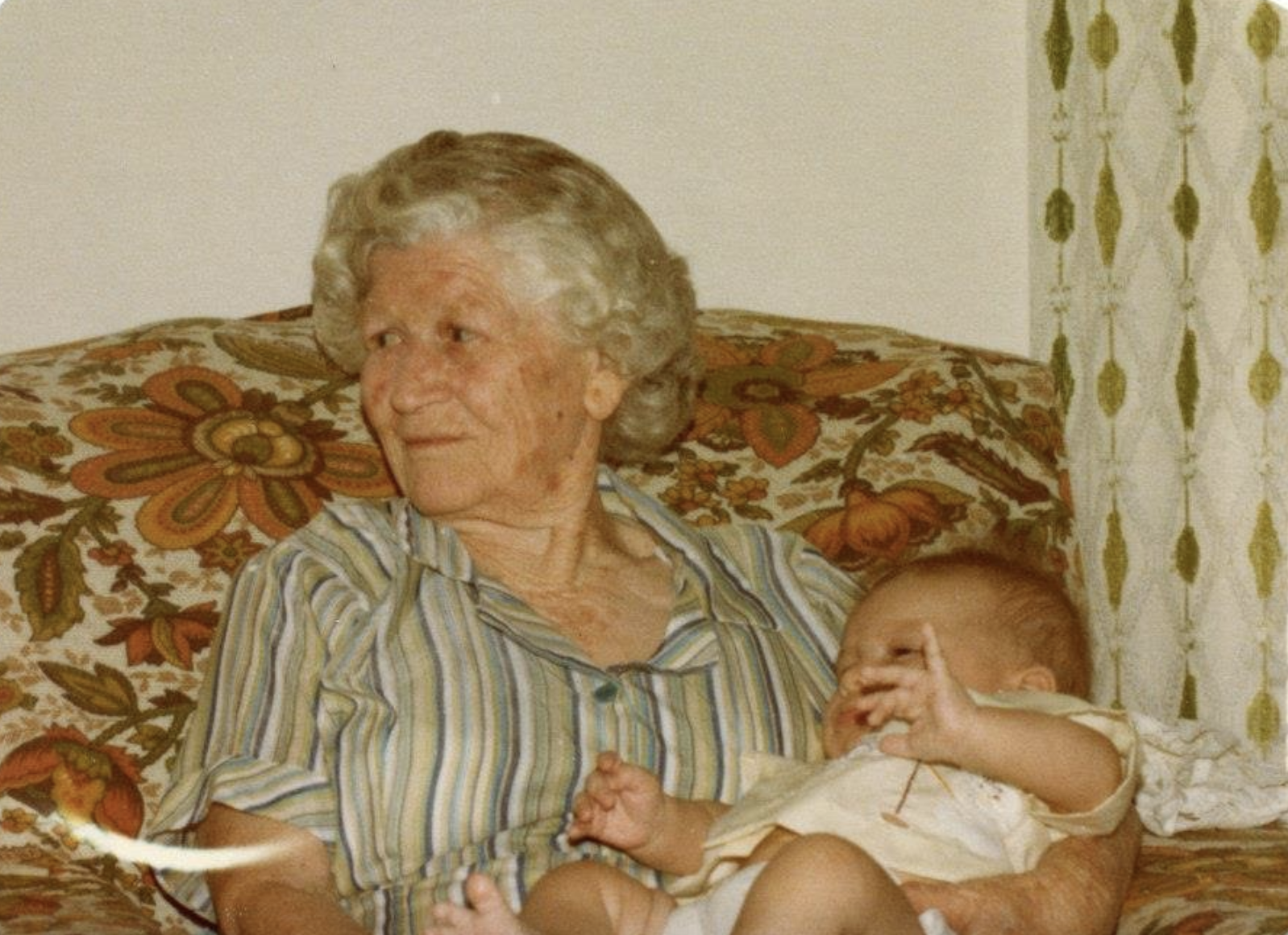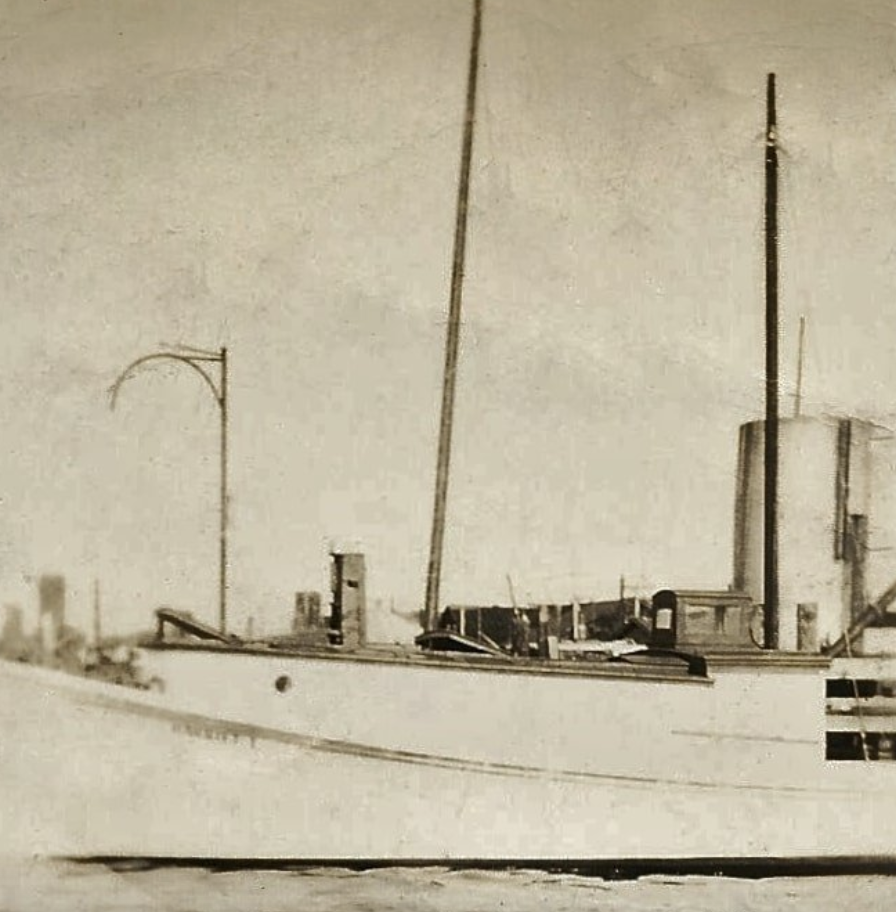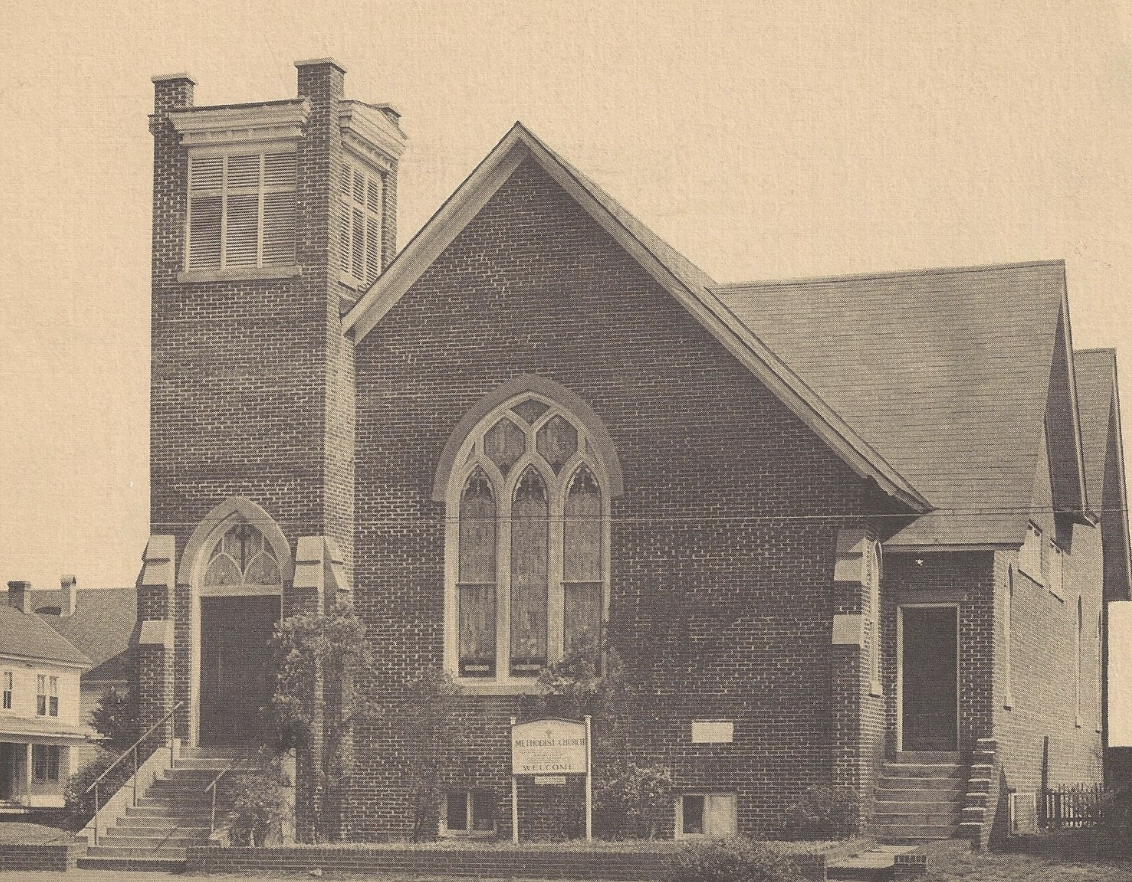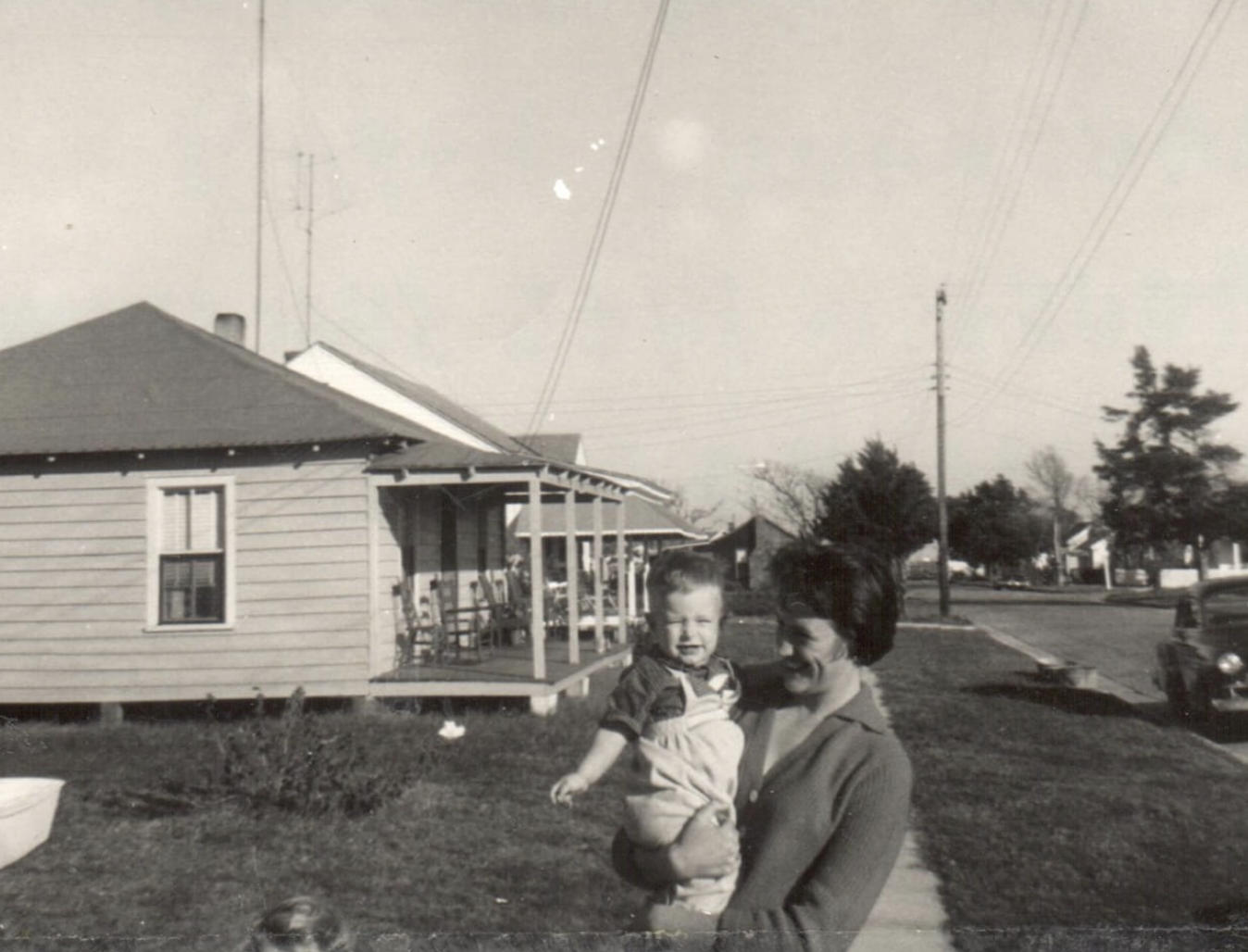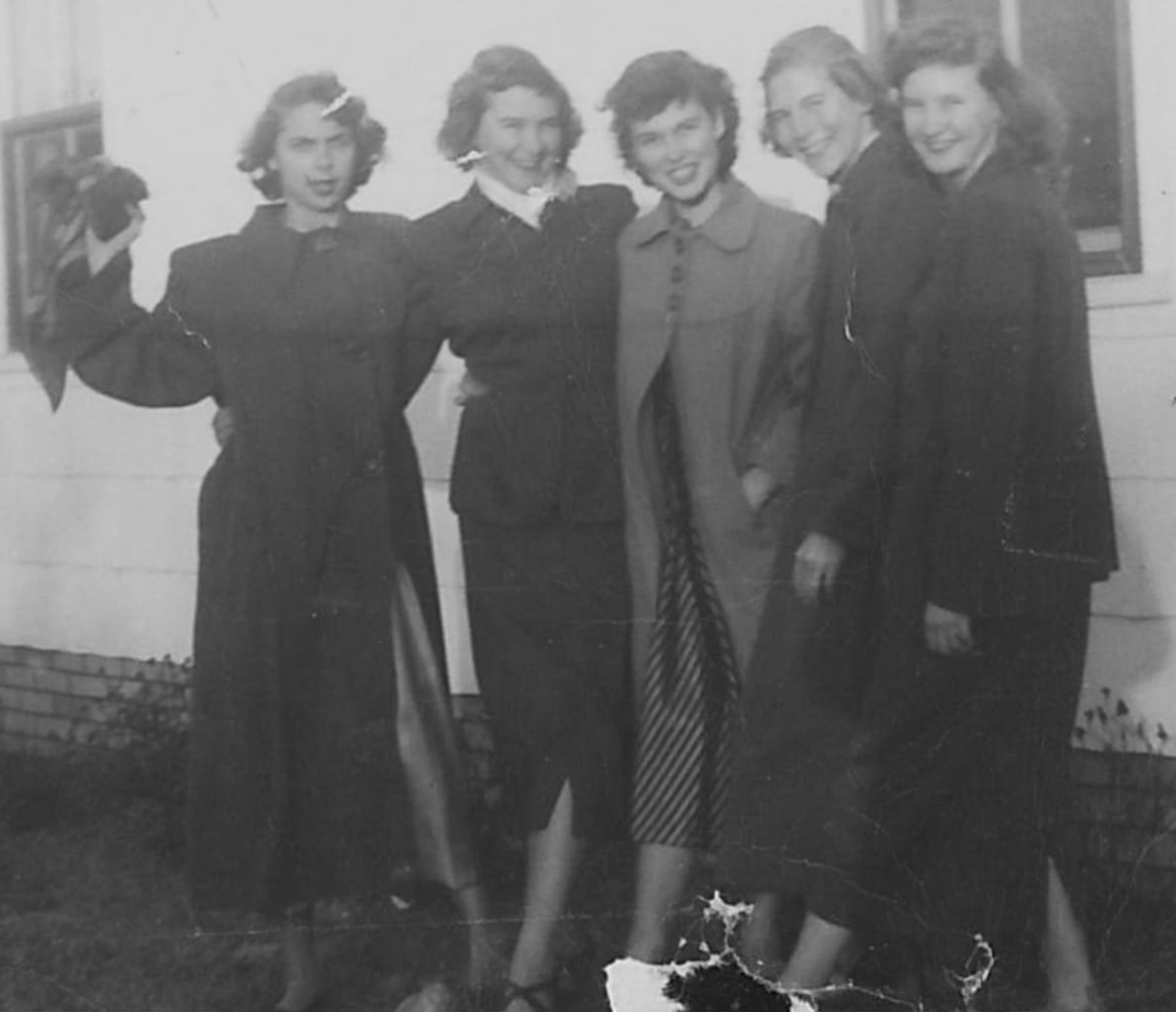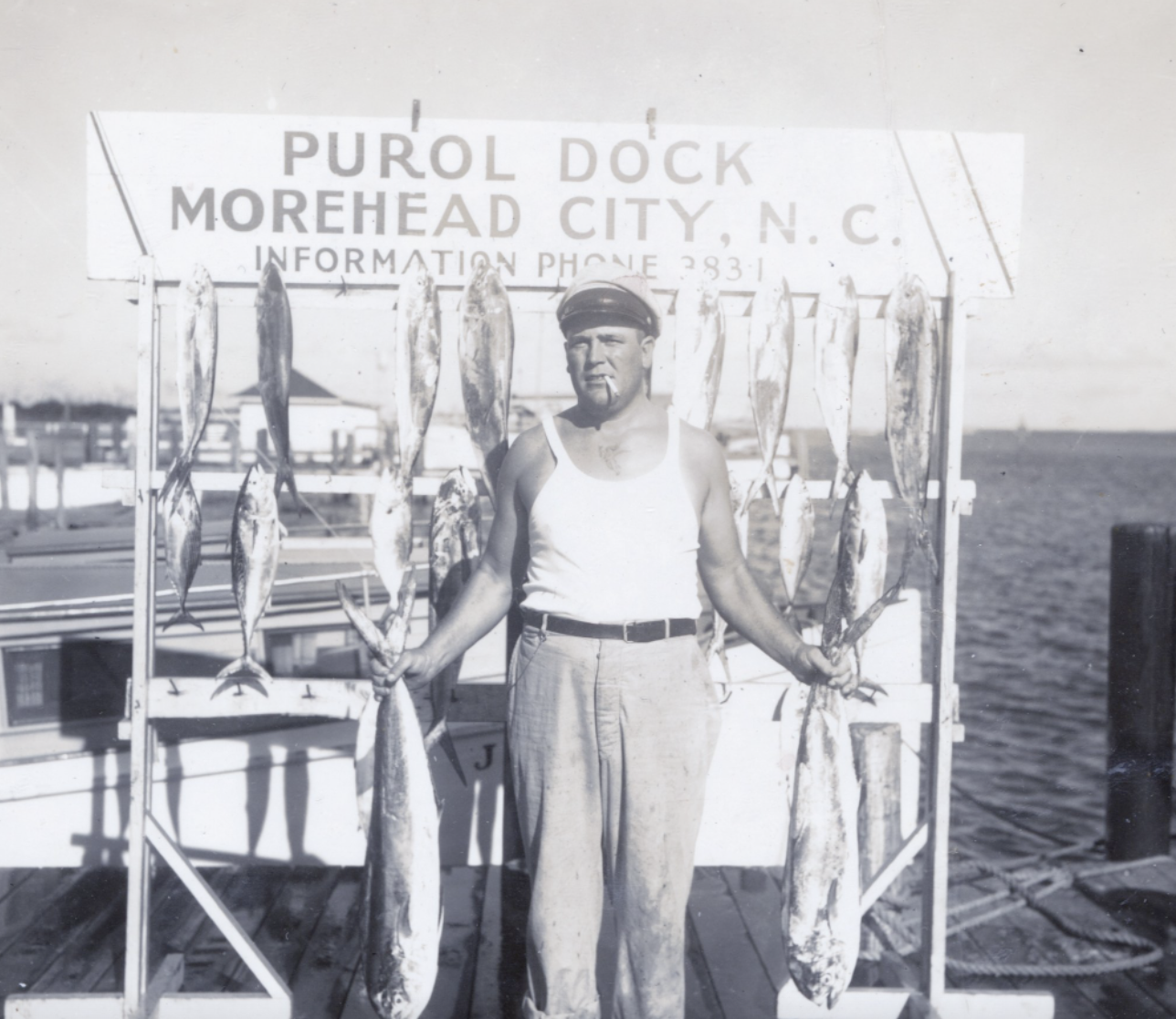Promise Land
Table of Contents
To explore the various pages about Portsmouth, either scroll to the bottom of the page or click on "Navigation" to be taken to a list of subpages.Introduction
John Motley Morehead’s 1857 plan for a new city at the terminus of the Atlantic and North Carolina Railroad was originally platted from the eastern boundary of Shepard’s Point to present-day 24th Street. The opening public auction of more than 100 lots in November of that year however, limited initial development to 15th Street.
But within a few years the advent of the Civil War was to raise a barrier to Morehead’s 15th Street goal, when occupying Union forces erected a military breastworks from Calico Creek to Bogue Sound, bisecting the new city at 12th Street. No records have been found to indicate when this barrier was removed, but a search of deed books covering the two decades following the end of the War indicates little or no development took place from the breastworks to that 15th Street limit.
Then in the late 1800’s several disparate and far flung events were to occur, each of which would play a part in the demise of an obscure Outer Banks island community and its subsequent rebirth on the shores of John Morehead’s new city.
First, the discovery of petroleum in Pennsylvania would eclipse the market for whale oil, forever ending the historic whaling industry of Shackleford Banks. Next, a series of devastating hurricanes would lay waste to large areas of that fragile barrier island and threaten the already tenuous existence of its inhabitants. And, finally, the burgeoning menhaden and seafood industries would bring new economic opportunities for the seafaring men of the Cape Lookout Banks.
Consequently and steadily for several decades the Cape Bankers were to leave their ancestral islands and establish new communities throughout Carteret County. And one of the places to which they would come was that heretofore “empty pocket” in the new city of Morehead, bounded roughly by the remnants of those Civil War breastworks to the east, by the railroad to the north, by the old 15th Street limit to the west, and, most essential to these seafaring people, by Bogue Sound to the South.
This, then, was the Promised Land.
While most of the relocated Bankers were concentrated within that narrowly defined area, others settled in already existing neighborhoods nearby. So the Promised Land almost from the beginning was not so much a geographical entity as more specifically a people and their culture. And theirs was a culture destined to conflict with the unfamiliar mainland society they so hopefully had come to join.
For although these Bankers were of the same stock as the inhabitants of the other villages along the waterways of Carteret County, the new town of Morehead City to which they had come was already populated with a much different and more varied group of people.
Here were the venturesome who had responded to John Motley Morehead’s exhortation to invest in “the first instance of an entire new city on the Atlantic coast being brought into market at once!...”. Others had been lured by his glowing description: “The City of Morehead is situated on a beautiful neck of land or dry plain, almost entirely surrounded with salt water; its climate salubrious, its sea breezes and sea bathing delightful; its drinking water good; its fine chalybeate spring strongly impregnated with sulphur……a pleasant watering place.”
Here were the railroad investors, the land speculators, the enterprising merchants, the itinerant tradesmen who had “walked the tracks” to yet another beginning. Too, the Civil War, like all such conflicts that rearrange large numbers of people, had left in its wake some individuals of still more differing origins, from Union officers to Yankee mercenaries. And mingling among them all were the farm-based families who had migrated to town, themselves casualties of the great social and economic upheaval that followed the end of an old and established order.
But diverse as this populace was, one thing they all shared was an extraordinary wariness of the newcomers from across the waters, and a firm determination to keep their distance from those Cape Bankers about whom they had heard so much but knew so little. This attitude was akin to one expressed in an editorial letter to the “Greensboro Patriot” of 1858: “Ever since our schoolboy days we have heard of Beaufort harbor, having learned from our geography that there was such a place away down on the sea-coast, many hundred miles distant, where the people lived on fish, and used oyster shells as cups, with which to drink water out of old pine stumps….the men of that region – as had been reported and believed in the interior by many – were scaly, had broad tails and thorny fins growing from their backs, the result of living on fish and diving after crabs….”.
And now the sigh of these refugees from the legendary Sey Banks [sic] literally sailing their small homes up Bogue Sound was further evidence of that difference. To the Bankers, it was imminently practical to take their houses with them – they had built them by hand in a fashion to allow dismantling and reassembly. But to Morehead residents, it was unheard of for an entire community to move to a new location across bodies of water and to take their homes with them over these waters.
One prominent city resident, watching yet another dismantled house riding by athwart two sailskiffs, idly remarked to a companion, “There go the Israelites to the Promised Land”, alluding to the Jewish custom of dismantling the tabernacle to set it up again in the next location.
For the Bankers were a people of limited education who spoke a dialect – almost a language – barely intelligible to any except themselves. They brought with them customs and a lifestyle dictated by their near isolation in a harsh world where survival was a constant challenge.
With ingenuity and inventiveness they had more than met the challenge by adapting the resources of that world to their own use. With timber salvaged from shipwrecks they had built their small homes, using sharkskin or porpoise hide to fashion hinges for doors and windows.
Their floors were scrubbed with abrasive white sand from the waters edge, and their mattresses were filled with astringent seaweed gathered from along the shore. Their lamps were conch shells filled with whale oil, and their drinking dippers, too, were shells. They marked the passing days with gum root corks strung on a rope and moved daily, abacus-like, from Sunday to Sunday.
From barefoot childhood their lives – and their livelihood – depended on the sea around them. Even the youngest learned to read the signs of buried clams and scallops as readily with his toes as with his eyes, judge the force of tide and undertow by the run of sands beneath his feet, and in the hollows of the dunes detect the telltale coolness of freshwater sources.
When beached whales were processed for oil, blubber melting in the hot sun pooled in hollows formed by footprints. Lamp oil was a luxury on the Banks, and women and children used small shells to scoop up even these minute amounts of a scarce and precious household commodity.
The women raised ducks and geese, tended cows and pigs, and cultivated small garden patches to supplement the dock and seakale and other potherbs native to the area. They harvested the abundant coastal grape by spreading sheets beneath the vines and simply shaking the supporting trees. They wove reeds and grasses into wallhanging baskets, used for storing smaller articles of clothing in homes with little furniture.
Corks, or floats, for fishing nets were handcarved from roots of the sweetgum tree, the holes burned through with heated pokers. Net leads, or sinkers, were made by pouring melted lead into molds formed by thumb-sized depression in the sand.
Waterfowl were plentiful if gun and shell were not, and even the maligned but tasty loon often fell prey to the boatman’s oar in the pre-dawn darkness of its saltmarsh feeding ground.
Home remedies evolved from means at hand. Liquid drained from mussels was warmed and used for treating earache; leaves of mullein made a poultice for breaking fevers; dog fennel was bruised and mixed into a salve to reduce inflammation. Topical treatment of puncture wounds consisted of application of fat pork soaked in turpentine; boils were covered with raw dough coated with lard.
Cloth strips to be used for babies’ belly bands were first scorched or charred with hot irons, an attempt to promote the healing process.
Opium tea made from the seeds of the native poppy provided their most potent analgesic, augmented by poultices using the oil-filled leaves of the prickly ash, the “toothache tree”. Strong sassafras tea was brewed in a desperate effort to “break out” the measles, that childhood scourge of often deadly virulence in the adult. And unfortunate children with croup were dosed with the gelatinous residue skimmed from a broth of boiled pigs’ feet.
Family and community ties were strong and were constantly reinforced by contacts maintained up and down the Carteret coast. In their skiffs and sharpies they moved as casually and confidently across the waters from The Evergreen to Salter Path as townsmen moved about on land.
Social activities often centered on religion, and the revival of Methodist evangelism during the latter half of the nineteenth century had added color and excitement to an otherwise drab existence.
The protracted revivals and famed camp meetings on the Cape were welcome diversions. These popular events not only brought together families and friends from the scattered communities, but provided contact with the world beyond these barren islands. And in the era of national, political and religious turmoil, news from that world was disquieting.
Just as the nation was divided over emancipation, a schism had developed within the Methodist Church over the issue of slavery, and all the churches of the South had withdrawn to establish an independent denomination. Since neither of these events promised to have any great social or economic impact on the inhabitants of the Cape Banks – the land was not suitable for farming and they were not slaveholders – they simply continued to “adhere North” in their church affiliation. Further, they seemed to have been remarkably indifferent to political causes espoused by either the North or the South.
But later, in the war’s bitter aftermath called Reconstruction, this lack of support for the Southern cause – if not downright aid to the enemy – was perceived by the beleaguered remnants of the local Confederacy as disloyalty and even treachery. In this the families from the Cape shared the plight of others along the entire Outer Banks – the men accused of cowardice and of “hiding in the sand hills” to avoid conscription into the armies of the South.
Although Morehead City had a well established Southern Methodist church, the newly arrived Bankers promptly organized a separate congregation within their own neighborhood. Support for the small band in Morehead City came through the Methodist Blue Ridge Conference, which reached across the entire state to help this “Northern Methodist” church in the new community. Almost providentially, this first church building was constructed with materials salvaged when a ship loaded with lumber wrecked on nearby Bogue Banks.
Conditioned as they were, however, to having met their basic needs directly with their own hands from the immediate resources of sea, land and air, this generation of Bankers now found themselves projected into a more complex and differently structured society. And again they adapted.
Eager to gain the advantages of this promising new life, they abandoned many old customs as they adopted more modern and convenient ways of living. An incidental but striking example was the virtual explosion of new and often exotic given names which appeared almost immediately in this population, a fact destined to confound future genealogists.
The scarcity of print resources and the near isolation of the lower Banks had for decades limited the introduction and exchange of information and people – and of new names. As the population of the dozen or so Banks families had increased, so had the number of same-named persons. Problems of identity had been partially solved by the simple expedient of appending to a wife’s first name the first or popular name of her husband – Mary-Wes, Annie-Randolph, Emma-Seward, Het-Bob, PollAnn-John. Predictably then, many of the mainland firstborn became namesakes of public figures previously unheard of by the parent generation, and of names in print never heard and ever after mispronounced.
In their dwellings, too, changes were soon evident. The houses abandoned on the islands and those that had been transported to the mainland had, for the most part been built of native cedar and pine, and with timber salvaged from frequent shipwrecks. Axe-hewn cedar posts and beams were fastened with hand carved wooden pegs which had been soaked in whale or porpoise oil to swell the pegs for tighter fit, and raised rafters slotted snugly into vertical openings gouged through the cedar posts. The entire framework could be dismantled, moved and reassembled. The buildings were so sturdily made that many of those transported across the waters to new locations are still in use today.
Sheathing was rare and roofing materials were usually fasted onto open lathwork, strongly suggestive of earlier English framework-and-thatching. That the Bankers used reed in building is evidenced in early photographs depicting all-reed conical fishing huts at the Mullet Pond on Shackleford Banks. Ralph Lane, in his narrative of the 1585-86 settlement of Roanoke Island, refers to “…my house, and ....reedes, that the same was covered with.”
Inside stairs were rare in smaller houses, and when lofts or attics were used for sleeping space, entrance was often through a window reached by an outside ladder. Since upper floors were seldom more than six or eight feet from ground level, jumping was an expedient means of exit, perhaps giving rise to the story-and-a-jump description of such houses.
One on the mainland, new materials and new techniques were rapidly incorporated in improving the transported dwellings and in new construction. Milled tongue-and-groove lumber covered or replaced the old wide-planked floorings, and delicate beaded ceiling covered walls.
While hinged wooden awnings were retained for a time in interior partitions for ventilation, glass-paned windows were now used on most exterior walls.
Nails replaced wooden pegs, and metal replaced porpoise hide and leather shoe tongues for hinges, except on submersible fishing gear like crab boxes.
Washed white sand was still used to brush-fill brick hearths instead of mortar, and to scrub bare pine floors, but colorful and easily cleaned linoleum proved a boon to housewives. Living conditions greatly improved as manufactured stoves replaced the fireplace for both cooking and heating. For many, however, the convenience of indoor plumbing and electricity was still years in the future.
An aerial photograph of that neighborhood circa 1920 reveals a major reason why these people chose to relocate in Morehead City instead of Beaufort, a town which was nearer, larger, and was an older, more established community. The design of John Motley Morehead’s new city provided all property with the shoreline access that was absolutely essential to this group whose entire lives were dependent of the sea. These Cape Bankers made extensive use of the network of streets and alleys leading from each of their new homesites directly to the shoreline.
“The Landing” was the center of activity in the new community. Here their skiffs, sharpies and snappers were moored in the shallow waters where the hard sandy bottom of Bogue Sound made docks and piers unnecessary.
Shorelines were stabilized with puncheons at boat landings, where logs were used in tandem to run boats above the tideline. Fishing nets were spread to dry on large frames made of peeled ash striplings, and, when not in use by fishermen, these net spreads became favored playground equipment for neighborhood children – an early version of parallel bars stretched over sand and water.
In those days before Bogue Sound became closed by pollution, clams, oysters, scallops, crabs, conchs, and a great variety of fish were its marketable products, and a primary food source of residents. Shrimp had not then become fully accepted as an edible seafood, and were routinely discarded as nuisance catches.
In the fall, mullet hauls were landed all along the shoreline where, at midday, crews roasted the tasty fish on spits over open fires. Then the air was redolent with that peculiarly distinctive aroma as fat dropped onto live coals heaped over roasting sweet potatoes.
Now for the first time a broad range of opportunities was available for the singular skills of the Cape Bankers. Already expert seamen, the men of oar and sail had promptly mastered the complexities of power boating. Soon the menhaden factory operators, seafood dealers, and commercial and pleasure craft owners were finding among these experienced mariners the captains, mates, engineers and crews to work their boats. There were jobs to be found in boat building, seafood processing and transport, in the numerous sawmills and in construction.
Women, too, could now earn money in the neighborhood oyster houses and fish houses, and for a short while, in an experimental local canning factory. A unique and convenient cottage industry came into being as seafood processors delivered consignments of scallops to be opened at a set price per bushel or gallon. Scratch almost any yard in the neighborhood today and you will find collections of often perfectly preserved scallop shells, testimony to their enterprise.
These changes did not come at once nor to all the Banks people. Many were to remain for all their days the fiercely independent watermen of near legend. Others would find themselves ill-prepared to compete in a world disciplined not by elements but by man, and one infinitely more cruel.
But as educational and occupational opportunities grew, most in succeeding generations would turn from the sea to find their futures in more conventional fields.
Steadily and surely many old traditions and old ways vanished. In its beginning the Promised Land could readily count one hundred men whose occupations were listed as “fishermen”, “clammer”, or “boatman”. Today there are no more than four or five who earn their living from the sea.
Although many of the lots sold by the old Shepard’s Point Land Company are still tenanted by descendants of those original purchasers, the population has been diffused by retirees attracted to the slow quietness of this waterside community. Of all the dwellings brought over from the Banks only six or seven remain identifiable. Of these, three have been recognized by the local historical association with that organization’s historic marker.
But the real heritage of the Cape Bankers in the Promised Land is the remarkable sense of continuity and of community that characterizes their descendants today. Ironically, the very resistance to their assimilation into that earlier social and economic structure has assured their survival as a recognized cultural entity.
Although they now live and work as part of today’s largely homogenized society, when gathered together in that one place that most symbolizes their past they quickly regain their identity as a distinctive group. Communicating with each other in the finely honed and uniquely specific dialect that defies interpretation by the outsider, they share experiences and memories from a long and common history that spans generations, thus preserving a heritage and a culture peculiar to these Cape Bankers of the North Carolina Coast.
